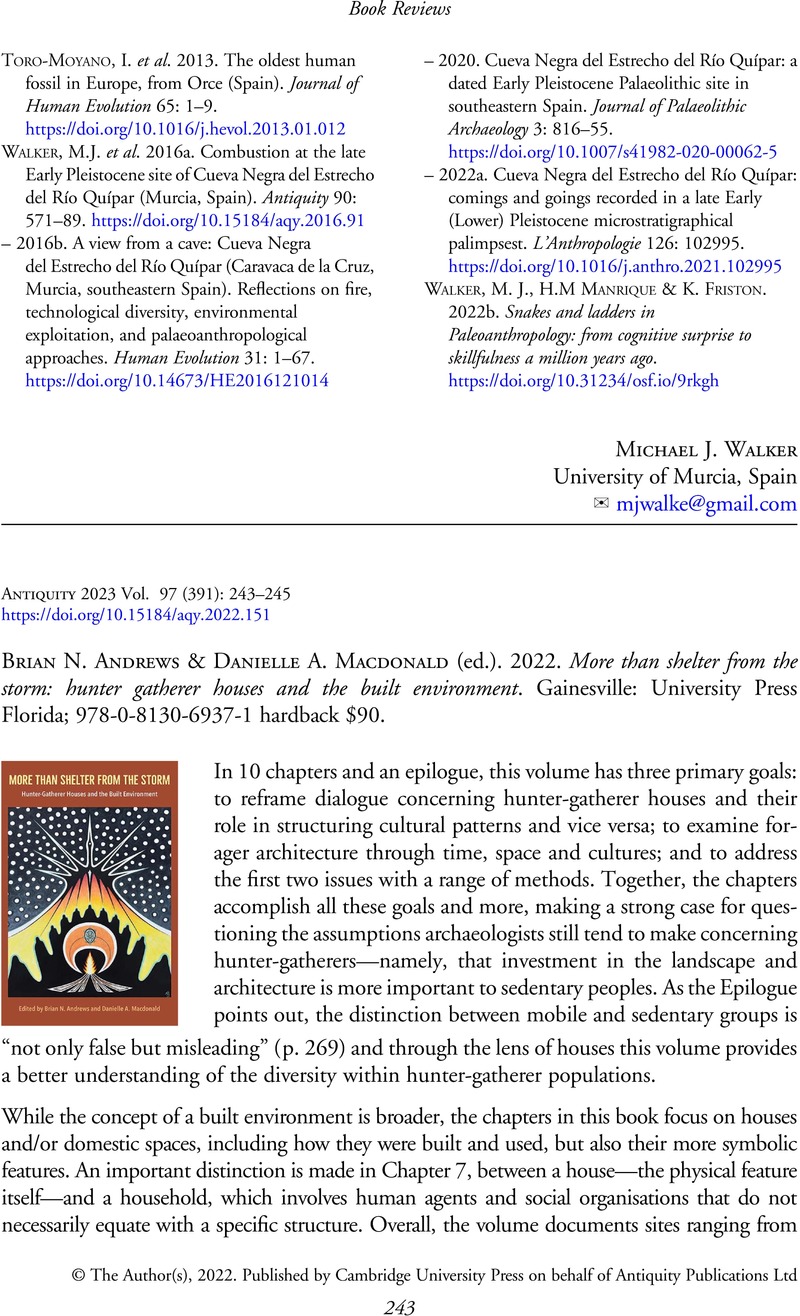No CrossRef data available.
Brian N. Andrews & Danielle A. Macdonald (ed.). 2022. More than shelter from the storm: hunter gatherer houses and the built environment. Gainesville: University Press Florida; 978-0-8130-6937-1 hardback $90.
Review products
Brian N. Andrews & Danielle A. Macdonald (ed.). 2022. More than shelter from the storm: hunter gatherer houses and the built environment. Gainesville: University Press Florida; 978-0-8130-6937-1 hardback $90.
Published online by Cambridge University Press: 21 November 2022
Abstract
An abstract is not available for this content so a preview has been provided. Please use the Get access link above for information on how to access this content.

- Type
- Book Reviews
- Information
- Copyright
- Copyright © The Author(s), 2022. Published by Cambridge University Press on behalf of Antiquity Publications Ltd


